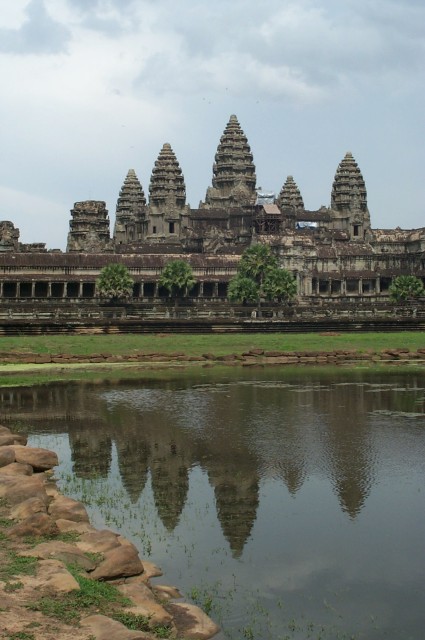The Angkor Wat Temple, the
mysterious Hindu Temple built by King Suryavarman
II at the height of the Khmer
Empire in the 12th century is the world's largest temple complex. Consists of
many sandstone temples, chapels, causeways, terraces and reservoirs, it is
believed that the gods assisted the architect whose identity remains a mystery
until today.
The walls of the temple are covered with thousands of carving depicting scenes of confrontations between the gods and the demons of classical Hindu mythology. Yet on some are genial-dancing ladies known as "Apsara" and on others depicting royal processions with the king and other royalties riding on elephants. Whatever it is, the carvings are clearly masterpieces in the true sense.
There is much about Angkor Wat that is unique among the temples of Angkor. The most significant point is its westward orientation. West is symbolically the direction of death, which once led many scholars to conclude that Angkor Wat was primary a tomb. This was supported by the fact that the magnificent bas-reliefs of Angkor Wat were designed to be viewed in an anticlockwise direction, a practice which has antecedents in Hindu funerary rites. Vishnu, however, is often associated with the west , and it is commonly accepted nowadays that Angkor Wat was probably both a temple and a mausoleum for Suryavarman II.
